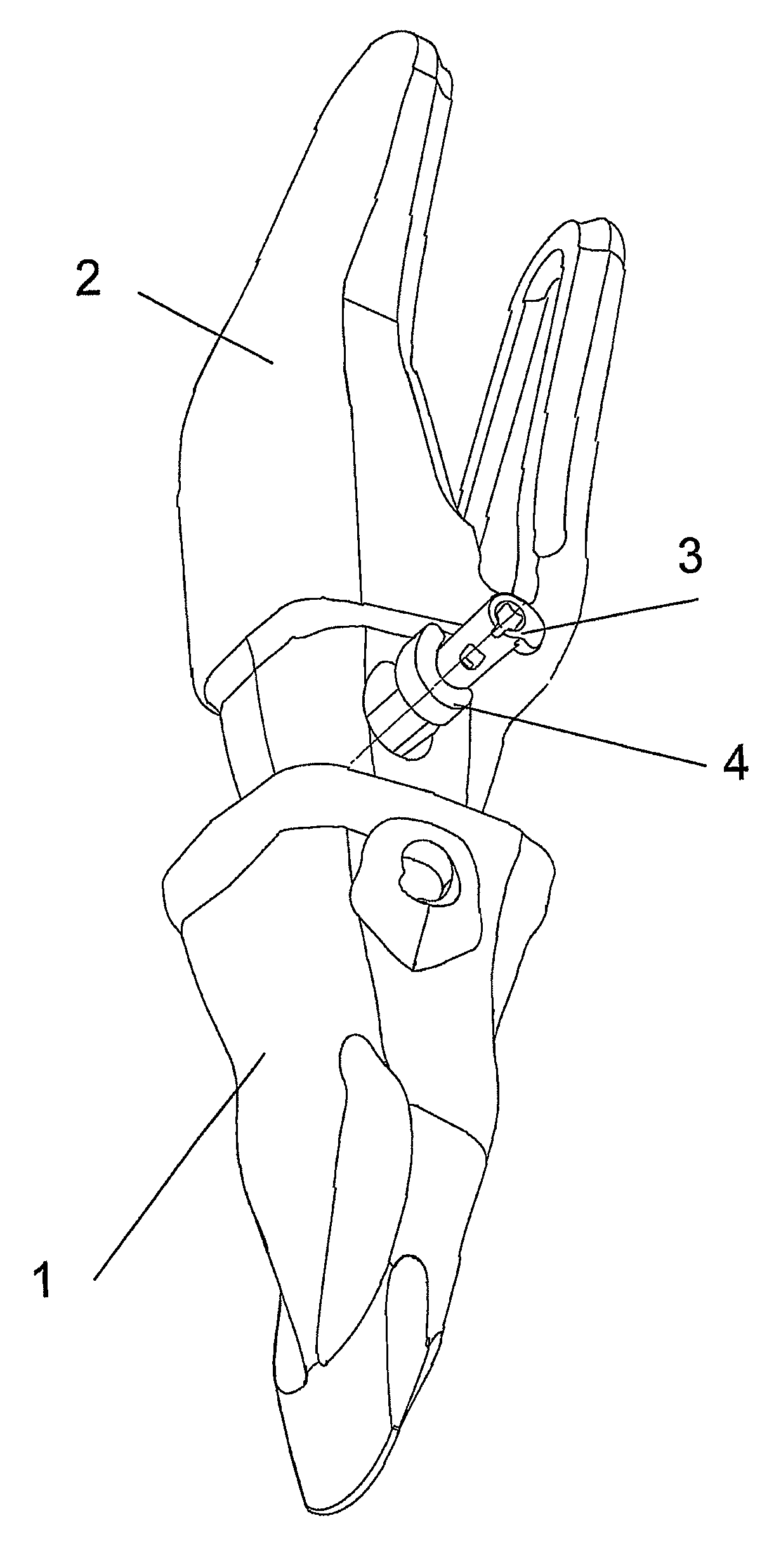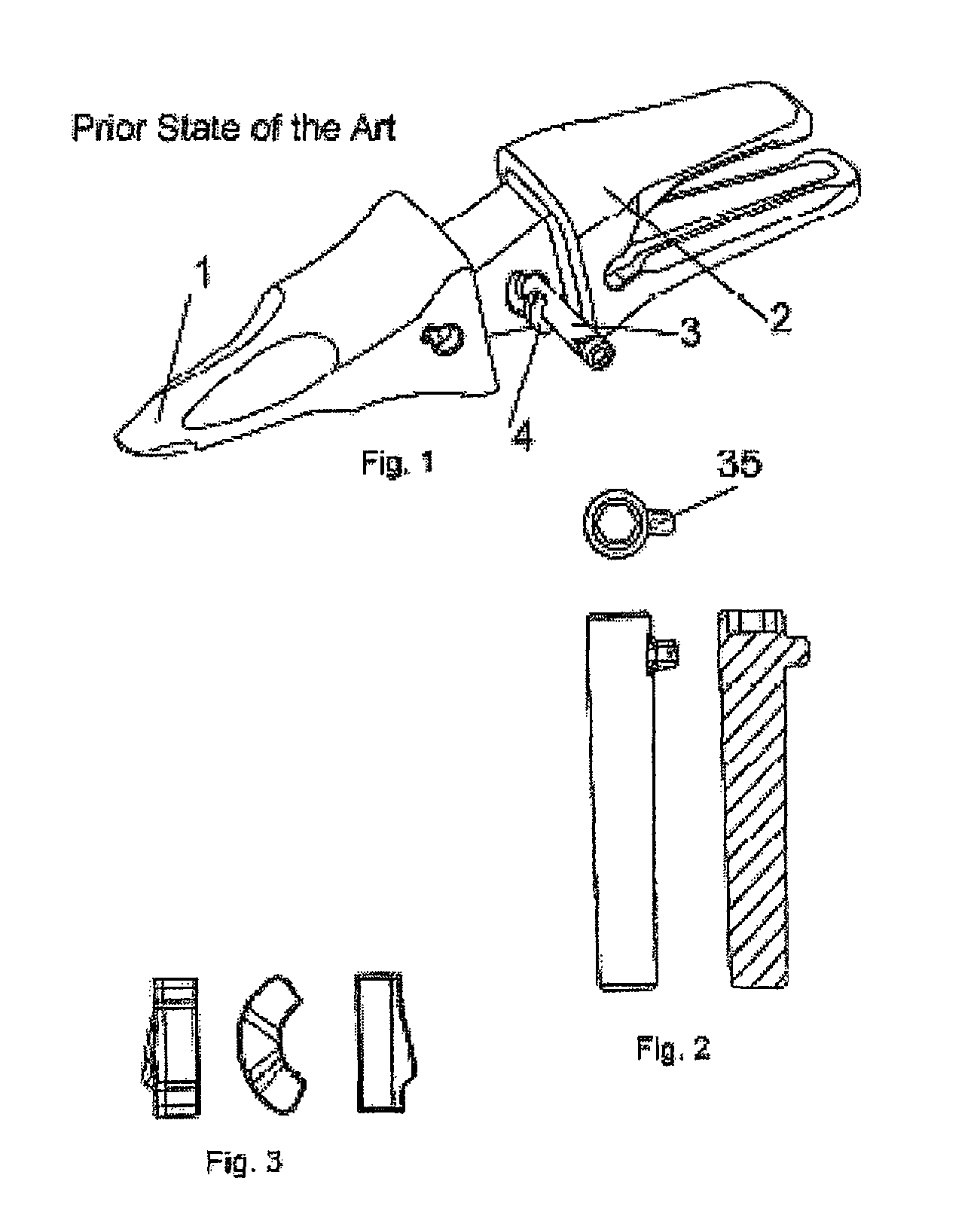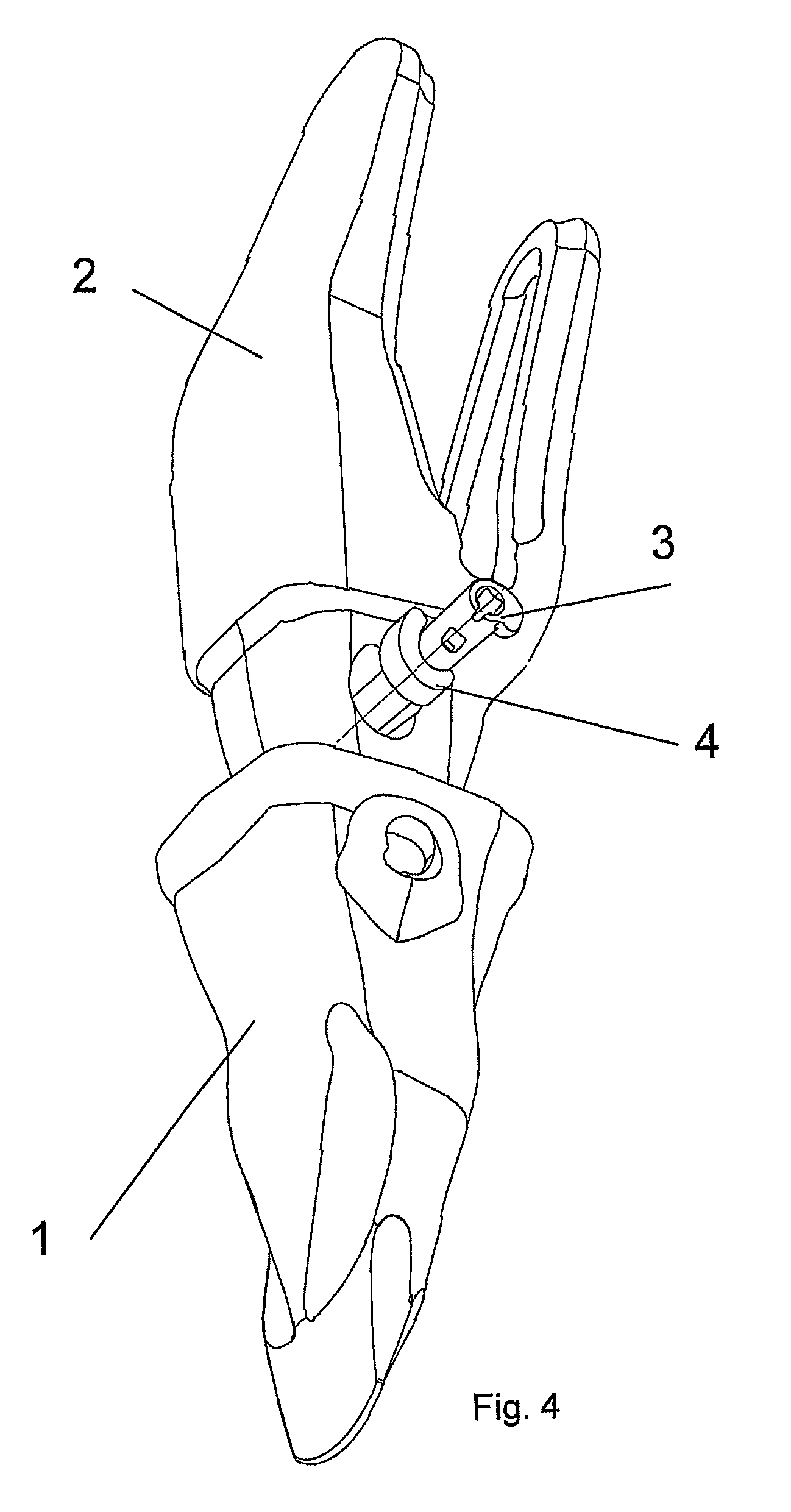Detachable fastening system between a male piece and a female piece, pin and female piece
a technology of detachable fastening and pin, which is applied in the direction of drags, agriculture tools and machines, construction, etc., can solve the problems of pin and tooth being lost, internal wear and breakage of pins, and pins being subjected to wear and breakage, so as to facilitate access to the upper end of pins
- Summary
- Abstract
- Description
- Claims
- Application Information
AI Technical Summary
Benefits of technology
Problems solved by technology
Method used
Image
Examples
Embodiment Construction
[0049]Several embodiments of the invention are described below which are applied, by way of example, to the assembly and disassembly of a tooth in a tooth holder of a bucket of an excavating machine.
[0050]In reference to FIGS. 1 to 3, which show solutions of the prior state of the art, a tooth-tooth holder assembly is observed comprising a tooth 1 which determines a hollow, a tooth holder 2 with a nose which is housed inside the hollow of the tooth 1, a pin 3, a retainer associated to the pin 5 and an elastic tensor element 35.
[0051]The following figures refer to a fastening system object of the present invention, between a tooth 1 and a tooth holder 2, in which a pin 3 detachably blocks the tooth 1 with respect to the tooth holder 2, and a retaining element 35 associated to the pin 3 together with an elastically loaded tensor element 4 collaborate to prevent the pin from coming out of its blocking position. A pin is described in the embodiment with a length encompassing the entire ...
PUM
 Login to View More
Login to View More Abstract
Description
Claims
Application Information
 Login to View More
Login to View More - R&D
- Intellectual Property
- Life Sciences
- Materials
- Tech Scout
- Unparalleled Data Quality
- Higher Quality Content
- 60% Fewer Hallucinations
Browse by: Latest US Patents, China's latest patents, Technical Efficacy Thesaurus, Application Domain, Technology Topic, Popular Technical Reports.
© 2025 PatSnap. All rights reserved.Legal|Privacy policy|Modern Slavery Act Transparency Statement|Sitemap|About US| Contact US: help@patsnap.com



